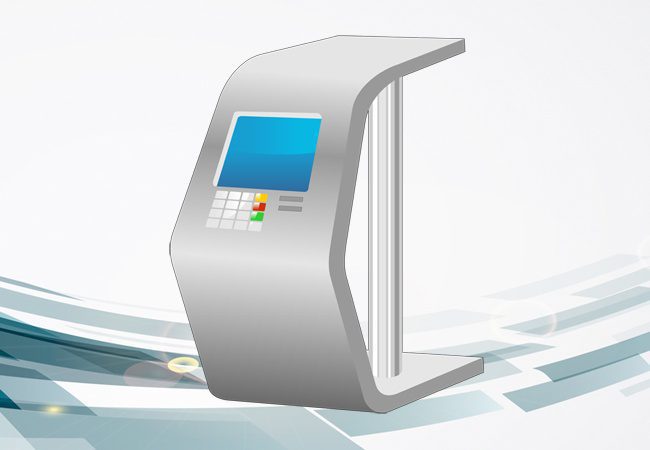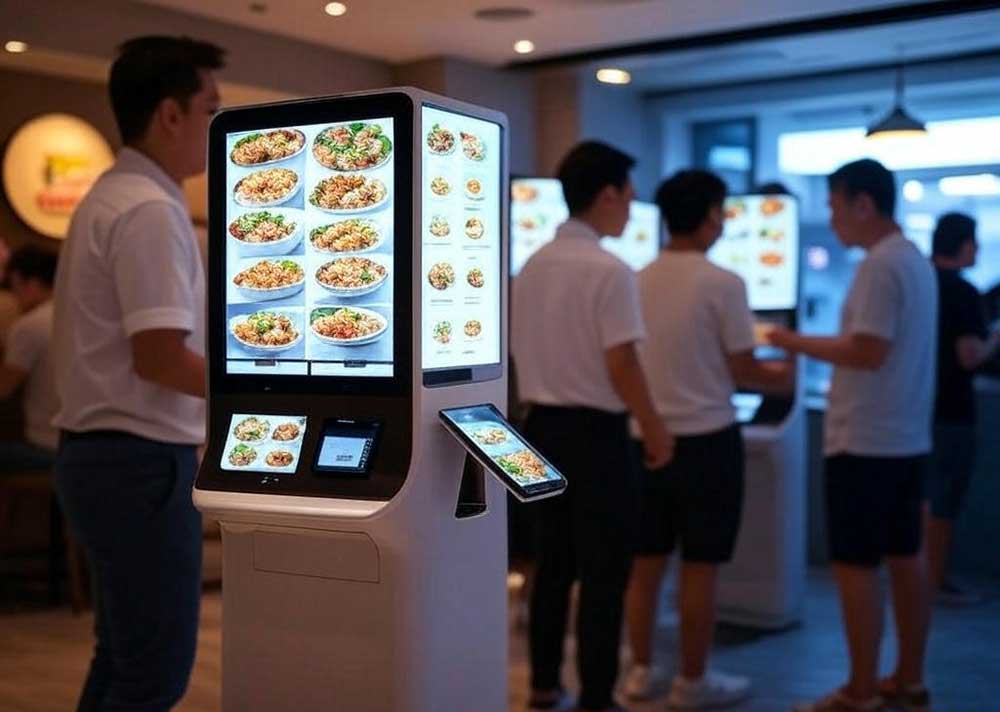In today’s fast-paced digital world, businesses must constantly innovate to stay competitive – one of the most effective ways to do that is by integrating self-service kiosks into your operations. Whether you’re in retail, hospitality, healthcare, or banking, kiosks are no longer just a futuristic concept—they’re a game-changing tool that enhances efficiency, boosts revenue, and elevates customer satisfaction.
Imagine a solution that reduces wait times, cuts labor costs, and gathers valuable customer insights—all while providing a seamless, interactive experience. That’s the power of kiosks. From speeding up transactions to offering personalized recommendations, these smart systems are transforming how businesses engage with their audience.
In this article, we’ll explore 5 compelling reasons why your business needs a kiosk, backed by real-world advantages and industry trends.
Therefore, if you’re looking for a cost-effective, scalable, and future-proof way to enhance your business, a kiosk could be the missing piece. Let’s dive in and explore how this technology can take your operations—and profits—to the next level.
1. Unlock Growth: Discover Key Advantages of Implementing a Kiosk Strategy.
Imagine walking into your favorite fast-casual restaurant on a busy Friday night. Instead of the usual chaotic line, you’re greeted by sleek touchscreen kiosks where customers effortlessly customize meals, add premium upgrades, and pay in seconds. This isn’t science fiction – it’s the reality for chains like Panera Bread, who reported a 7% increase in average check size after implementing self-service kiosks.
This transformation reveals a powerful truth: kiosks aren’t just about automation – they’re profit multipliers. In today’s experience-driven economy, businesses that implement smart kiosk strategies gain three crucial growth advantages:
- 24/7 Revenue Generation – Unlike human staff, kiosks never need breaks, allowing airports, hotels, and retailers to capture sales around the clock
- Upsell Automation – Smart prompts consistently suggest add-ons and premium options without awkward sales pressure
- Labor Optimization – By handling routine transactions, kiosks free your team to focus on high-value customer interactions
The numbers speak for themselves:
- Walmart saw 30% faster checkouts with self-service kiosks
- Airport retailers report 40% higher impulse purchases from kiosk users
- Hospital systems reduced patient check-in times from 15 minutes to 90 seconds
As consumer expectations evolve toward seamless, tech-enabled experiences, kiosks have become the silent growth engine for forward-thinking businesses. The question isn’t whether you can afford to implement them – it’s whether you can afford not to.
2. Beyond Transactions: How Kiosks Can Revolutionize Your Customer Experience.
If you are at a crowded theme park, standing in what feels like an endless line just to buy bottled water. Suddenly, you spot a sleek kiosk nearby. With three taps, you’ve paid for your drink and are back to enjoying your day. This simple moment reveals a profound truth – modern kiosks aren’t just transaction machines; they’re experience transformers.
Leading brands are leveraging kiosks to create memorable customer journeys. Take Sephora’s Color IQ kiosks – these innovative stations scan customers’ skin tones and recommend perfect makeup matches, blending cutting-edge technology with personalized service. The result? A 35% increase in foundation sales and customers who feel truly understood.
Today’s kiosks deliver game-changing experience upgrades:
- No more “line rage” – 86% of consumers say long waits ruin their experience (Qudini)
- Empowered choices – Interactive menus with vivid visuals help customers discover new favorites
- Personalized interactions – Smart kiosks remember preferences and make tailored recommendations
- Accessibility boost – Multi-language options and adjustable interfaces welcome diverse customers
From hotel lobbies to hospital waiting rooms, kiosks are quietly rewriting the rules of customer satisfaction. They’re not replacing human service – they’re enhancing it by eliminating friction points and creating space for meaningful staff-customer connections. In an era where experience is the ultimate competitive advantage, kiosks might just be your secret weapon for customer delight.
3. Streamline Operations & Boost Revenue: The Undeniable Value of Business Kiosks
The bustling kitchen of a popular burger joint was in chaos – orders were piling up, cashiers were overwhelmed, and customers were growing impatient. Then they installed self-order kiosks. Within weeks, order accuracy jumped to 99%, service speed increased by 30%, and most surprisingly, average order value grew by 18%. This isn’t magic – it’s the measurable impact of smart kiosk implementation.
Behind every successful kiosk deployment lies a powerful dual benefit: operational efficiency that cuts costs while simultaneously driving revenue growth. Consider these compelling numbers:
- Quick-service restaurants report 20-30% labor cost reductions with kiosks (Forbes)
- Retailers see 15-25% higher basket sizes from kiosk orders (NCR)
- Hotel chains reduce front desk staffing needs by 40% while improving check-in satisfaction
Kiosks deliver financial impact through:
✓ Faster throughput – Serve more customers during peak hours
✓ Built-in upselling – Automated suggestions increase basket size
✓ Labor optimization – Redirect staff to high-value tasks
✓ Error reduction – Eliminate costly order mistakes
✓ Data collection – Uncover profitable customer insights
The financial case is clear. Whether you’re running a 10-unit franchise or a multinational corporation, kiosks represent one of the few technologies that pay for themselves while actually improving service. In an era where razor-thin margins make efficiency paramount, kiosks have evolved from nice-to-have to must-have profit drivers.
4. From Self-Service to Data Insights: Some Compelling Reasons to Invest in a Kiosk Today
At a major airport, a lone kiosk does more than just print boarding passes—it’s a goldmine of customer intelligence. By tracking peak usage times, passenger preferences, and common pain points, this unassuming terminal helps airlines optimize staffing, improve layouts, and even negotiate better retail partnerships. This hidden value reveals the untapped potential of modern kiosk systems.
Today’s kiosks are evolving from simple transactional tools to powerful business intelligence platforms. Consider how:
- Menu customization trends at restaurant kiosks inform kitchen inventory decisions
- Frequent purchase combinations at retail kiosks guide product placement strategies
- Service usage patterns in healthcare kiosks help allocate medical resources
The data advantage is staggering:
- 72% of businesses report improved decision-making from kiosk analytics (Deloitte)
- Retailers using kiosk data see 18% more effective promotions (Forrester)
- QSR chains reduce food waste by 22% through demand forecasting
Beyond convenience, kiosks offer three transformative benefits:
- Real-time operational visibility – Spot bottlenecks as they happen
- Customer behavior mapping – Understand unspoken preferences
- Predictive analytics – Anticipate needs before customers ask
In an age where data drives competitiveness, kiosks serve as both customer touchpoints and insight engines. They’re not just changing how you serve customers—they’re revolutionizing how you understand them. The question isn’t whether you can implement a kiosk system, but how quickly you can start learning from it.
5. Modernize and Engage: Explore The Essential Benefits of Integrating Kiosks into Your Business Model.
When luxury retailer Burberry introduced interactive digital kiosks in their flagship stores, something remarkable happened. Customers weren’t just buying clothes—they were immersing themselves in brand stories, virtually trying on trench coats via augmented reality, and spending 34% more time in stores. This wasn’t just a tech upgrade; it was a complete reinvention of the retail experience.
In today’s digital-first world, kiosks have become the bridge between physical and digital commerce, offering businesses three critical advantages:
1. Tech-Forward Brand Perception
- 68% of consumers view businesses with kiosks as more innovative (Accenture)
- Interactive displays increase brand recall by 41% (Nielsen)
2. Enhanced Customer Engagement
- Gamified kiosks boost interaction time by 300% (MIT Research)
- Virtual try-ons increase conversion rates by 65% (Retail TouchPoints)
3. Seamless Omnichannel Integration
- QR code scanning at kiosks drives 27% more app downloads
- Mobile wallet compatibility increases repeat visits by 39%
From hotel lobbies to car dealerships, modern kiosks are transforming passive transactions into dynamic brand experiences. They’re not just tools—they’re conversation starters, data collectors, and brand ambassadors rolled into one sleek package.
Final Thought
For businesses looking to stay relevant in an increasingly digital marketplace, kiosks offer more than efficiency—they provide the cutting-edge interactivity today’s customers expect. The real question isn’t whether you can afford kiosks, but whether you can afford to be left behind without them.
By looking through all these, integrating self-service kiosks offers a multifaceted advantage for modern businesses. They unlock significant growth by enabling 24/7 revenue generation, automating upselling, and optimizing labor allocation, leading to tangible increases in average transaction values and faster service.
Beyond mere transactions, kiosks revolutionize the customer experience by reducing wait times, empowering choices, personalizing interactions, and enhancing accessibility.
Operationally, they streamline processes, cut labor costs, boost order accuracy, and drive revenue through faster throughput and built-in upselling. Furthermore, kiosks evolve into powerful data insight tools, providing real-time operational visibility and valuable customer behavior mapping.
Ultimately, they modernize a business’s image, enhance customer engagement through interactive features, and seamlessly integrate the physical and digital realms, positioning businesses as innovative leaders in an increasingly tech-driven world.


